
December 2003 |
Access Archives |
TRENCH REPORT: The News Media did a better than usual job this Armistice/ Remembrance/ Veterans Day and our A-1 Network of correspondents have sent lots of recommendations. Here are some of their favorites: Listen to an Interview with Belleau Wood Veteran, Gene Lee of the 5th Marines. (link) Did Airpower Play a Decisive Role in WWI? Yes, says Col. Walter Boyne in this interview. (link) Learn About the Crack in the Tomb of the Unknowns at the Lehrer News Hour. (link) Our Own Hundred Years' War [WWI to War on Terrorism] by Clark S. Judge. (link) . . . Columnist Andy Melomet says check out the Turner Movie Classics network for World War I films. Fifteen Great War movies are scheduled for Dec/Jan . . . Last, I'm afraid I spoke too soon last month. The BBC still loves the Great War Society website; it's just darn hard to find the page with the recommendation. (link)
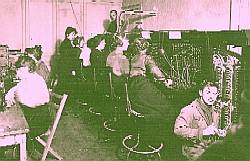 Main Telephone Switchboard, ToulClick to Read Michelle Christides's Tribute to Her Mother Oleda in Story of a Hello Girl
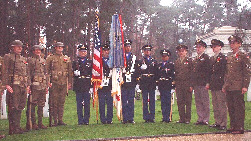 British Reenactors Pershing's Doughboys at |
||||||||||||||||||
 |
This Month's Special Feature Serbia at War |
|
| |
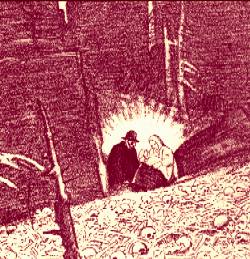
WWI Cartoon of the Month
Christmas 1919 [detail]
From German Magazine Simplicissimus

Admiral Lord Fisher, Spring 1917
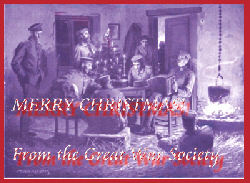
In early December 1918, almost completely recovered from his wound, my father, Sgt Albert K. Haas was able to return to his Division. From Vichy he went by train to Nevers and from there to 78th Division Headquarters in Semur and then on to the village of Genay. . . In Genay he shared a room in the home of Madame Laurent and her daughter. Two days before Christmas Madame misunderstood the logistics and billeting of men assigned to the village and subsequently gave their room to two others. My Dad later wrote: "After much discussion, we asked Madame's permission to sleep in the hayloft for the night.. She did not think it good enough for us, but we finally convinced her it was. She insisted on climbing the ladder to the loft and taking a couple of white pillows with her for our bed. All our protest against misuse of pillows was in vain and we slept in the beds as arranged. It was rather a unique place to spend Christmas Eve." . . . On Christmas Morning "Madame insisted they have breakfast in her home. It was the strangest breakfast I ever had, Beef soup, wine, bread and cheese." In the evening, an impromptu entertainment was given at the Y.M.C.A. hut and Ed and I took the old folks along. All civilians in the town had been invited to attend. They thought the perfectly rotten show was wonderful." That night he and Ed again slept in the hay loft before being assigned to the home of Madame Allured. Thus ended Christmas in Genay.
from Margaret Haas.
|
|||


Only two American warships were lost to enemy fire in the Great War:
- Destroyer DD 61 JACOB JONES Sunk by German submarine U-53 off Scilly Island, 6 Dec 1917.
Jacob Jones went down in 8 minutes taking 64 men with her and was the first US destroyer ever to be lost
to enemy action.(article)
- Armored Cruiser ACR 6 SAN DIEGO, formerly Pennsylvania Sunk by German U-156 off US East coast 19 July 1918 with 6 killed.(article)
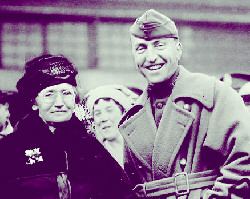
Rickenbacker's Mom Welcomes Her Son Home
Click to read Captain Eddie's Memoir and other Doughboy BiographiesGREAT WAR 2004 EVENT CALENDAR | |
|
Spring Meeting March 12-14 Bay Street Armoury, Victoria BC | |
|
National Seminar The Near East and the First World War Liberty Memorial, Kansas City, MO April 23-25, 2004 (link) | |
|
State University of NY, Plattsburgh, NY August 6-8, 2004 (link) | |
|
Email Response |
|
| The following individuals are hereby thanked for their contributions to this issue of the Trip Wire: Chris Wattie, Duncan Aram, Susan Neeson, Frank Herron, Christina Holstein, Tony Langley, Andy Melomet, Len Shurtleff, and Alice Horner. The photo of Eddie Rickenbacker is from the Auburn University Archives. Michelle Christides and Margaret Haas are both preparing manuscripts on World War I subject. Michelle is writing a history of the Signal Corps Hello Girls and Maggie is producing an annotated version of her father's diary of his year in France. Until next month, your editor, Mike Hanlon. |
Membership Information  Click on Icon |
SUBSCRIBE TO THE TRIP-WIRE (Or Send it to a friend.) (Or send us a comment on the TRIP-WIRE) CLICK HERE TO CONTACT US VIA EMAIL |
For further information on the events of 1914-1918
visit the Directory Page of |

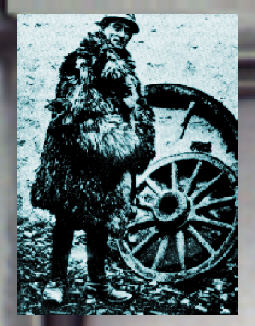 Driver with 13th Artillery Regiment,
French Army
Driver with 13th Artillery Regiment,
French Army